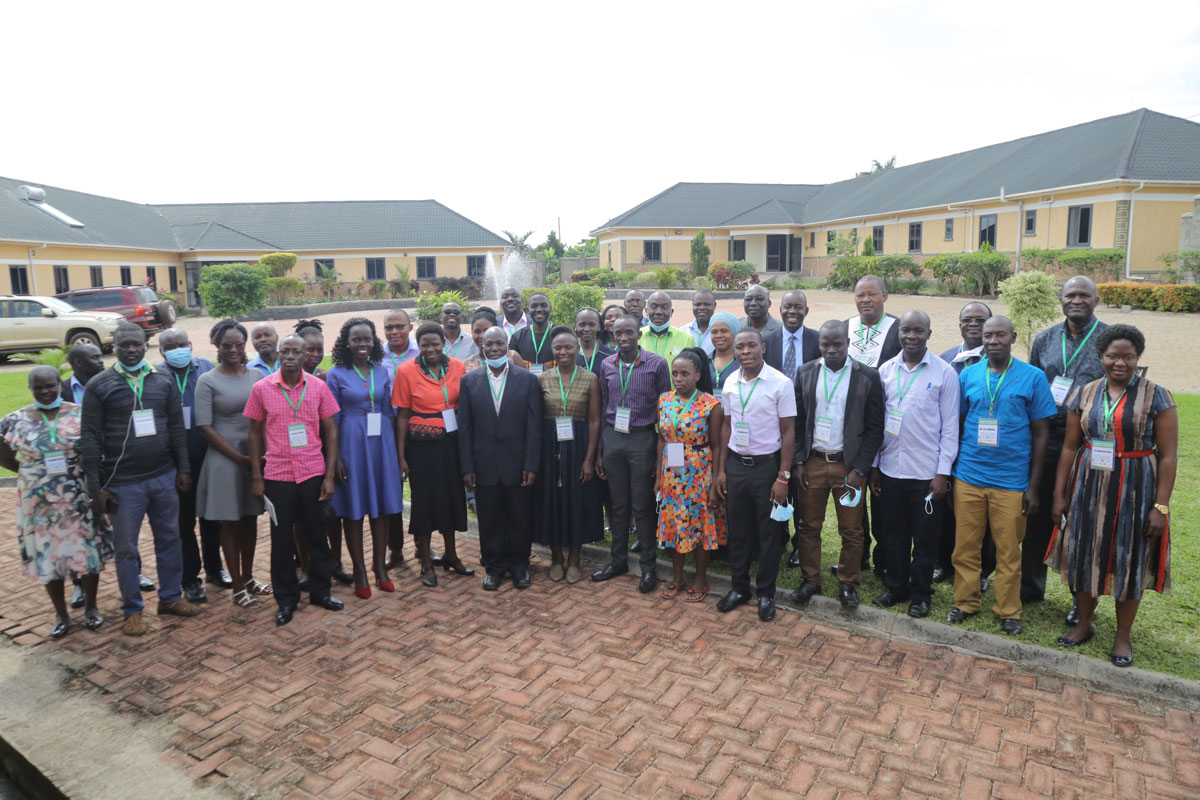Advances in sorghum and finger millet are making great strides in East Africa, thanks to the East African Center of Innovation for Finger Millet and Sorghum (CIFMS) based at Uganda’s National Semi-Arid Resources Research Institute (NaSARRI).
The progress of the Center was presented at NaSARRI’s annual review meeting, which hosted partners from within and outside Uganda with the aim of sharing progress on the planned activities, lessons learned, challenges and the way forward on how best achieve project goals. The two-day meeting held in July of 2022 included presentations, field visits and showcase of value-added commodities.
The meeting was an eye opener of what has and has not been done, and how research will develop alongside challenges and opportunities for project achievements.
Director National Semi-Arid Resources Research Institute Dr. Michael Ugen welcomed all guests including representatives of partner institutes that come together to have a common goal for the project.
Dr. Ambrose Agona, Director General of the National Agricultural Research Organisation (NARO), officially opened the meeting and re-echoed the importance of sorghum and finger millet crops in livelihoods of the people in semi-arid region of east Africa and beyond. And with the support from Center of Innovation Lab, finger millet and sorghum will be advanced to the next level in terms of consumption uptake by the farmers and other actors along the value chain and as well the need to use improved technologies in research like molecular technologies to accelerate crop improvement.

“Our collective work very important to Ugandans for food and nutritional insecurity, coupled with high levels of poverty and scarce water resources, land degradation and gender inequality in semi-arid regions of East Africa,” said Scovia Adikini, principal investigator of CIFMS. The Center offers a framework for national breeding programs to leverage resources, strengthen synergies and harness opportunities to accelerate development, release, promotion and adoption of varieties that address the needs of women and men, Adikini added.
The presentation on priority setting and cross-cutting themes by Dr. Losira and Ms Sophia highlighted the planned survey that identifies varietal characteristics and traits preferences by men and women, the role of gender along value chains, and market opportunities for food, livestock feed and other end-uses and to address food and nutritional insecurity coupled with a high poverty index and gender inequality. There is need for scientific research to support women, youth and resource-poor communities, so that they may have the opportunity to transform from a subsistence farming to increased incomes, resilience and food and nutritional security, according to the researchers.
Dr. Tusiime shared some of the institutional challenges that researchers face, including the increasing scarcity of funding, networking where multiple partners move at different paces, different policy environments in partnering institutions, and inadequate information and communications technology infrastructure in some institutions. Despite these challenges, however, CIFMS is prioritizing institutional capacity building and advised that implementation of performance monitoring systems should be based on the Center’s objectives.
Dr. Eric stressed the need to bring minds together to improve crops through plant breeding. Cooperation between countries to ease the movement of germplasm and improvement of available facilities are both possible means of capacity building, according to Dr. Eric.
Dr. Damaris, encouraged continued collaboration as she highlighted the potential to exploit large genetic potential on finger millet germplasm with NARS and CG centers in Uganda.
Day 2 of the annual review meeting was crowned with a field visit to the ongoing breeding activities comprising of the on-station sorghum and finger millet crop improvement trials and a showcase of value-added commodities.
Attendees present represented the following; Kenya Agricultural and Livestock Research Organisation (KALRO), Tanzania Agricultural Research Institute (TARI), International Crops Research Institute for Semi-Arid Tropics (ICRISAT), Makerere University, National Agriculture Research Laboratories (NARL) and Integrated Breeding Platform (IBP).



